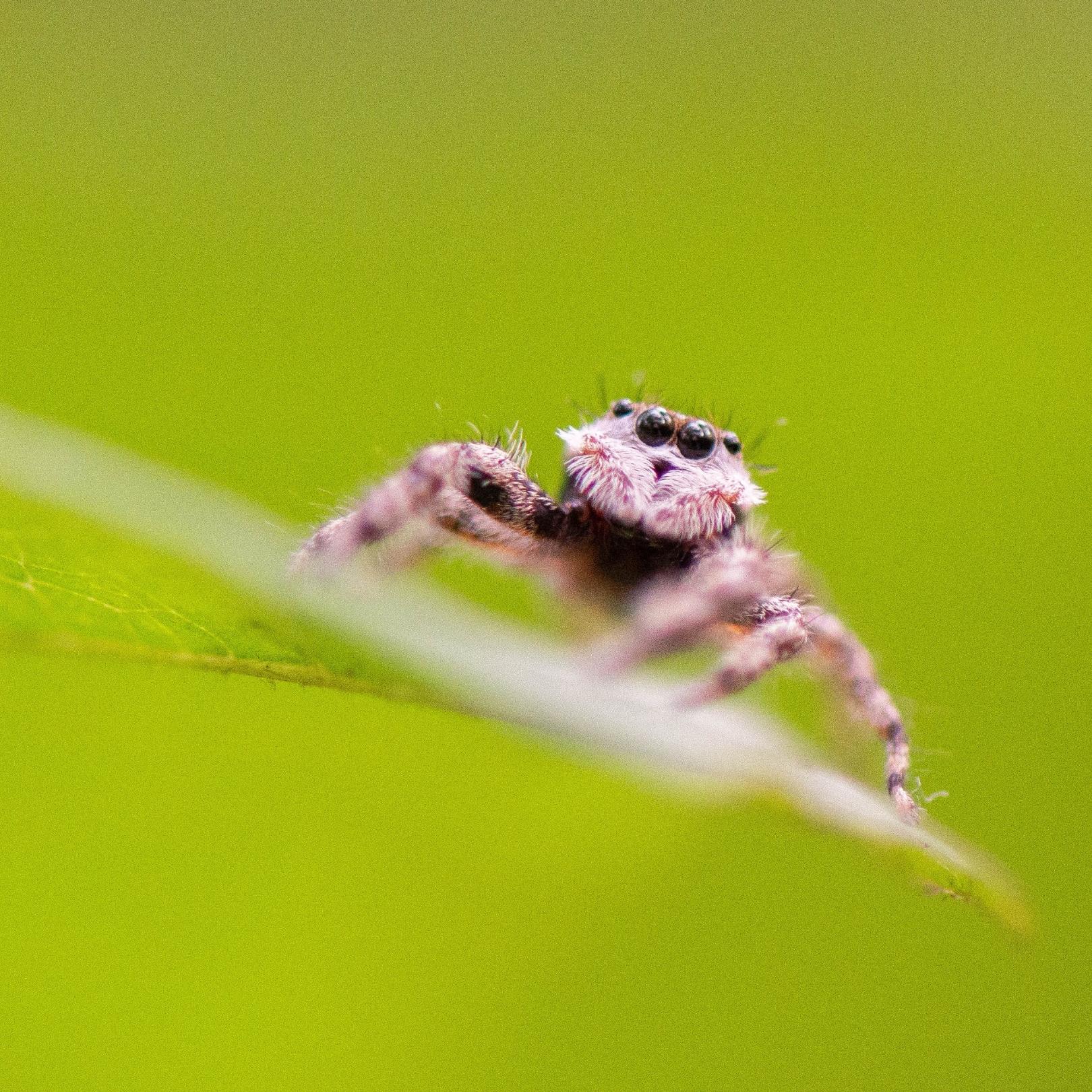Blog
The Cute Factor

by Cory Christopher, Director of Conservation
I have an uncle who is the hairiest human I’ve ever seen. He’s the meanest and tiniest person in our family, and his eyes are lost beneath a hairy thicket of furrowed brow.
In childhood photos I’ve seen of him, he looked as if Norman Rockwell painted him into existence—freckles, red cowlicked hair, and disproportionately large eyes on an over-sized head. Today, he is gray and angular; pocket-sized, but proportional. Even though your first impulse when you meet him is to pet him, he’s not the type of old man you feel compelled to help across the street.
Believe it or not, I’ve been thinking about his transformation from cute to curmudgeon a lot lately. Let me explain.
Recently, a great deal of attention is being paid to how aesthetics impact our connection to the natural world, from plants and animals to landscapes and ecosystems. To illustrate this, picture the cutest animal you’ve ever seen.
For me, it’s jumping spiders. Well, they’re at least in my top three, right beside sea otters and sloths. What animal are you thinking about? Is it furry? Does it have large, low-set eyes and a big, round head? Does it have a small chin and smooshed nose?
More than likely, whatever you’re thinking about has one of these “cute” traits. This may seem like cultural preference, but the origins of this preference run much deeper than that.
Early in human history, we became overprotective parents. Because taking care of helpless human babies requires so much energy, it would have been critical to not let this energy go to waste. Our brains became hardwired to take care of anything that even looks like a baby, whether it’s ours or not. This meant we needed some quick way to distinguish young and vulnerable children from everyone else.
As it turns out, the very features we think are “cute” are the same features that we have used for millennia to determine who needs protecting.
What does any of this have to do with conservation? Well, our strong, innate preferences for certain physical characteristics impact which species we are willing to protect. We love hippos and gorillas because they’re cute, but what about paddlefish or burying beetles?
Large, charismatic mammals tug on our heart strings, which is why so many conservation organizations have them as their ambassadors. But getting the average person to donate to Save the Snails is an exercise in futility.
Our biased aesthetics may also determine which landscapes we consider worth saving, and even how we save them. Humans tend to be drawn to open habitats like oak grasslands or savannas, which are said to be reminiscent of our ancestral beginnings in the African savannas.
In these tall grass environments, one can watch for danger while also hiding from it. A recently published land management survey revealed that the general public considers unburned habitats to be more aesthetically pleasing than recently burned habitats. Are we less attracted to burned forests or prairies because there is no place to hide? Perhaps, but other landscape-level studies demonstrated how fickle our aesthetics are—we like deserts, but not swamps; rural areas, but not mangroves. No one knows why, but the results are consistent.
A heartening result from these studies is that when someone’s ecological knowledge increases, so does their ability to look past deeply-seated aesthetics to develop an appreciation for all wildlife and wild places.
Education is not just supportive of conservation—it’s essential to it. Seeing our nature preschool students playing with worms gives me hope that they are already developing a more inclusive aesthetic.
I don’t expect people to put up posters of jumping spiders in teacups or hanging from tree branches, but I would like to see a Rockwellian treatment of preschoolers with faces covered in creek clay. Then again, as the father of the cutest of these preschoolers, I might be a little biased.